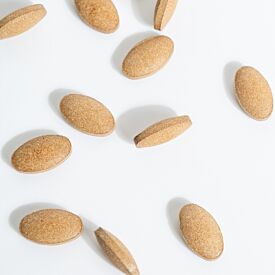How to Exercise for Your Dosha
We all know regular exercise is good for us. Not only is it good, but we actually need a certain amount of physical movement to live and keep our bodies functioning well. The benefits include everything from stress relief, improving mental health, and boosting energy to managing weight and strengthening our muscles and bones.
Consistent physical activity can also reduce the risk of cardiovascular disease, decrease blood pressure, promote better sleep, and have a positive effect on our hormones and sexuality.
Simply put, we are meant to move. Charaka, the ancient author of one of the main Ayurvedic texts, wrote:
“From physical exercise, one gets lightness, a capacity for work, firmness, tolerance of difficulties, elimination of impurities, and stimulation of digestion.”
This shows us that the importance of exercise has been taught for thousands of years!
But can something so beneficial actually harm us? Using the ancient wisdom of Ayurveda as a guide, we can soundly answer “yes.” And when we look at exercise through an Ayurvedic lens, we see how people of different constitutions are better suited for different types of workouts.
According to Ayurveda, all of nature is made of the elements, ether (or space), air, fire, water, and earth.
These elements combine in unique ways to create the doshas of vata, pitta, and kapha. Vata is comprised of ether and air, pitta is fire and water, and kapha is water and earth.
Since you and I are part of nature, we are also made of these elements and doshas in varying amounts, which creates our unique constitution. This inherent uniqueness in our make-up is one of the things Ayurveda celebrates—our individuality.
We can have one or two primary doshas, or maybe all three have a significant presence in the make-up of our constitution. Understanding our own unique combination is like holding a blue print—that owner’s manual—to what health and balance means to us—and how to get there.
Let’s look at how we can bring ourselves into balance by implementing an appropriate exercise routine for our constitution.
Not All Exercise Routines Are Created Equally
So how does exercise fit into our doshic makeup?
There are two fundamental principles in Ayurveda. First, like increases like, and second, opposites can bring balance.
Ironically, if we are in a state of imbalance, we will be attracted to activities that keep us out of balance instead of activities to bring us back into harmony and help us maintain our well-being. This is why we need the owner’s manual—so we can make better decisions to attain and sustain balance.

Vata Needs Rhythm and Routine
As a combination of the elements air and ether, vata dosha is involved with all movement—voluntary and involuntary.
Vata has cold, light, dry, and mobile qualities (called gunas), and a vata-predominate person will naturally be drawn to exercise that reflects these qualities. They are typically on the go, so they will be attracted to exercise that involves moving quickly. Running, cycling, faster paced yoga classes, and basically anything that keeps them on the move!
However, because of the quality of lightness that may show up in their physical structure, they can easily push themselves too hard, become depleted, and strain their bodies.
Focus on: Stability and Grounding
When to exercise: The kapha time of day, from 6–10 a.m. or p.m., is ideal. The energy of kapha during these times of day provides a stabilizing buffer for delicate vata.
Vata exercise tips and examples:
- A consistent routine is very important to someone who has a lot of vata in their constitution. The regularity will promote stability in the body and mind.
- For vata to feel grounded, they need to choose exercises that will apply the qualities that are opposite of those inherent in their nature. This would be low-impact, warming, grounding, steady, and strength building workouts.
- Vata does not need to exercise intensely to reap the rewards and benefits. They do best with regular daily movement that is gentle and fluid.
- Rhythmic activities like dancing, tai chi, rowing, yoga, swimming, and walking are usually good choices.
Kapha Needs to Get Moving
Now, at the opposite end of the spectrum from vata is the governing energy of kapha. The blending of the earth and water elements in kapha creates the qualities of heavy, slow, and stable.
We don’t have to worry about a kapha individual pushing themselves too hard or moving too quickly. Instead, we need to motivate this sweet loving individual to get up off the couch, get outside, and move!
Focus on: Movement and Invigoration
When to exercise: 6–10 a.m. or p.m., which are the kapha times of day. This helps get the lymphatic system moving, stimulates the digestive system, and encourages sustained energy throughout the day.
Kapha exercise tips and examples:
- Keep the exercise varied and fun! Where regular routines balance vata, it becomes a rut for kapha. Go for a mixed bag of workout options to stay interested.
- Because this individual often has a larger bone structure and a strong, sturdy frame, their body can endure more strenuous types of exercise.
- I have noticed it can be very helpful for kapha types to have a workout buddy who is not another kapha.
- Cardio and aerobic exercises that get the heart pumping are excellent choices—think running, jogging, dancing, or even an elliptical machine.
- If the choice for the day is walking, then it should be a brisk walk to stimulate the lymphatic system, strengthen the lungs, and get energy moving.
Pitta Needs to Keep Their Cool
The fire and water elements of pitta govern all aspects of transformation and metabolic activity in the body and mind. This inner fire will be a natural motivator to get out and exercise. Pittas are an athletic bunch who love to push the limits and compete with others and themselves.
Focus on: Moderation and Fun
When to exercise: In the morning or evening is often best. Pittas should avoid exercising in the middle of the day when the external heat can accentuate and aggravate their already fiery nature.
Pitta exercise tips and examples:
- Be careful to not exercise during the heat of the day or in a hot room. I’m sorry my fiery friends, no hot yoga for you—this type of exercise can cause pittas to become overheated in mind and body.
- The fiery pitta needs to be careful not to burn themselves out or push too hard. I usually advise the pitta individual to work out to about 70 percent of their capacity. This would translate to about 110 percent of the workout that vata and kapha would do!
- To satisfy pitta’s competitive nature, a friendly game of basketball, tennis, or volleyball will be just fine if they are mindful to not become overly intense. Keep it fun!
- Water sports such as swimming, water polo, kayaking, or even fly fishing are great choices, as the cooling quality of the water helps to soothe and calm pitta’s intensity.
- A nice cool shower or swim after exercising can also help pitta cool off and relax.

Pro Tip: Take It Outside
Finally, and possibly the most important tip for every body type: I am a firm believer that one of the best ways to exercise is in nature and not in an artificial environment. This has a profoundly positive effect on our overall well-being and helps us stay in tune with nature.
While you do your exercise in the great outdoors, keep the earbuds out. Please don’t check out while you work out. Instead, check in. Listen to the birds, the wind, and the leaves. Allow yourself to breathe deeply and take in your surroundings. Feel the prana, your vital life energy, flow through your body and balance your mind.












